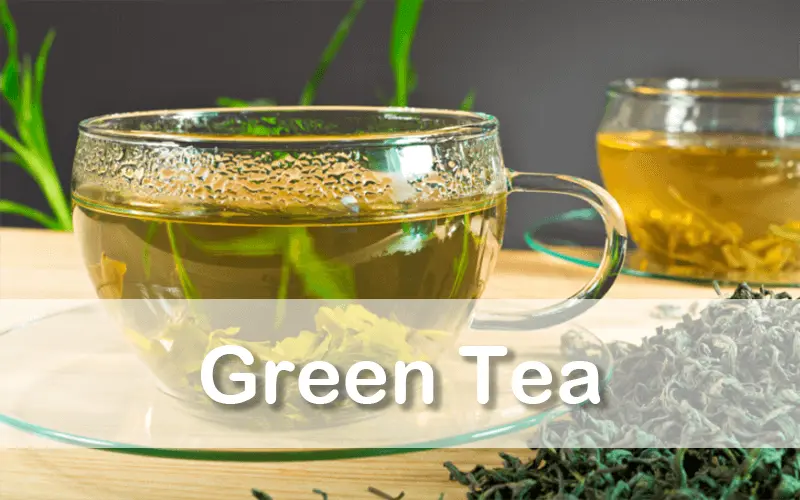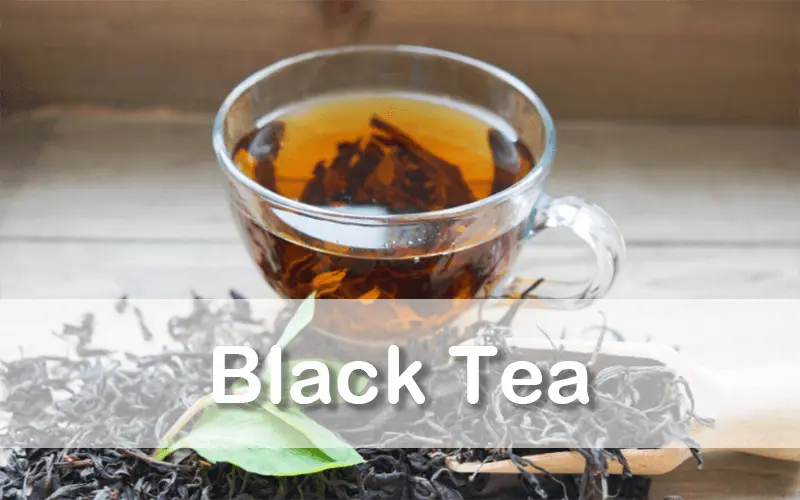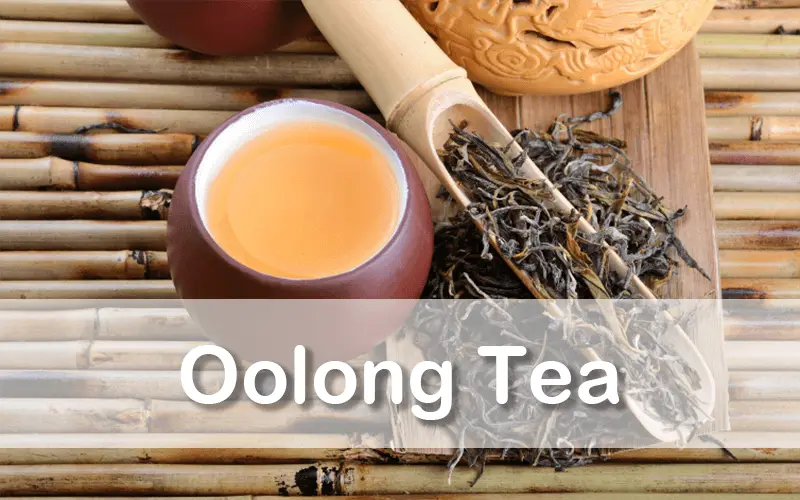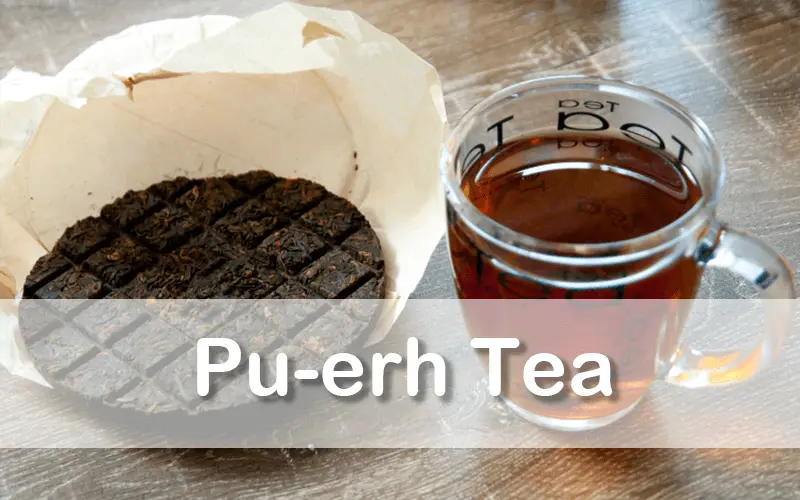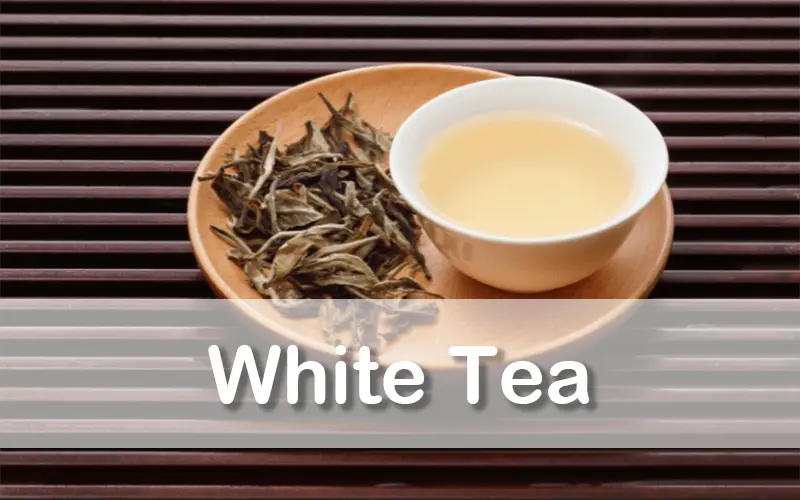Contents
Biluochun Tea Guide: Taste, Brew, and History Unveiled
Biluochun, renowned as Dongting Biluochun, ranks as the second most famous Chinese green tea, originating from Dongting Mountain near Taihu Lake in Jiangsu Province.
Historically known for its captivating fragrance, it earned the name ‘Biluochun’ by Emperor Kangxi, translating to ‘Green Spring Snail.’
The name Biluochun reveals much about the tea – its spiraled shape, vibrant green hue, and enduring high fragrance.
However, there’s more to Biluochun than meets the eye. Join me as we delve deeper into the world of this exquisite, pan-fried green tea.
Dongting Biluochun Tea
Why do we specifically mention Dongting Biluochun when talking about Biluochun?
It’s similar to West Lake is to Longjing and Xinyang to Xinyang Maojian.
For Chinese tea lovers, the authenticity of tea is paramount, and Dongting Mountain is the epicenter of Dongting Biluochun production.
This is not just about geography; it’s about tradition, quality, and heritage.
Hence, I’m starting our journey with Dongting Biluochun, diving into the heart of what makes this tea so revered.
What makes Dongting Biluochun tea unique?
Gong Zizhen, a renowned Qing Dynasty thinker and writer, deeply admired Dongting Mountain’s Biluochun tea.
He boldly declared, “Biluochun from Dongting Mountain is the finest tea in the world. The ancients were unaware of it, and people today are all about Longjing but often overlook Biluochun.”
Gong Zizhen’s roots in Hangzhou, the heartland of West Lake Longjing tea, makes this statement particularly striking.
Yet, he bestowed the title of “the best tea in the world” upon Dongting Mountain Biluochun, a testament to his immense esteem for it.
So, what exactly sets Dongting Mountain’s Biluochun apart as “the best tea in the world”?
The secret lies in its five distinct characteristics, which we will explore next.
Unique Growing Environment
Geographical Location
Dongting Mountain, the heart of Biluochun tea production, nestles in Dongshan Town, Wuzhong District of Suzhou City.
This area, comprising Dongting East Mountain as a Taihu Lake peninsula and Dongting West Mountain as a water-encircled island, boasts a warm and humid climate with plentiful sunshine, thanks to the vast expanse of Taihu Lake.
Mirroring Longjing tea, Dongting Mountain Biluochun tea adheres to the Chinese national standard: GB/T 18957-2008, implemented in November 2008.
Climatic Conditions
The climate, integral to Dongting Biluochun’s uniqueness, is shaped by Taihu Lake and the varied terrain.
With an average annual temperature of 16°C, about 2190 hours of sunshine yearly, and an average rainfall of 1100 mm, this region provides an ideal microclimate for tea cultivation.
The relative humidity here is 79%, contributing to the perfect growing conditions for tea trees in this fertile land.
Soil Conditions
The soil where Dongting Biluochun thrives is a unique blend, primarily consisting of Wutong System quartz sandstone, purple mica sandstone, and a small portion of Mesozoic limestone.
The hills, shaped over time by lake water erosion, filled with slopes and lake sediments.
The tea trees predominantly grow on the gentle slopes, benefiting from the natural yellow-brown soil rich in organic matter and phosphorus, with an ideal pH value between 4 – 6.
Vegetation
Dongting Mountain is a biodiversity hotspot with a plethora of plant species.
The Biluochun tea gardens are interspersed with pine, fir, holly, and hemp trees, alongside a variety of fruit trees like ginkgo, loquat, bayberry, chestnut, citrus, peach, plum, and pomegranate.
With a forest coverage rate exceeding 80%, these trees contribute to Biluochun tea’s distinctive floral and fruity aroma, which sets it apart.
The rich tapestry of geographical, climatic, and soil conditions, coupled with the diverse vegetation, shapes the unique quality of Dongting Mountain Biluochun tea.
Unique Planting
The unique interplanting of tea and fruit trees in Dongting Mountain is a hallmark of Biluochun tea cultivation.
Unlike other green teas grown in batches, Dongting Biluochun tea trees are almost equivalent to wild, unpruned varieties.
The interconnected branches and roots of tea and fruit trees contribute to Biluochun’s distinct “floral and fruity taste” while adding complexity to the tea-picking process.
This special aroma of Biluochun tea owes much to the synchrony of tea bud growth with the blooming season of fruit trees.
The tea buds, immersed in the floral sea during their growth, benefit from the fallen leaves and flowers of fruit trees, which serve as natural fertilizers, enriching the tea’s flavor year after year.
Furthermore, the fruit trees provide shade, protecting the tea from direct sunlight and preserving the tea buds’ delicate taste.
This “tea-fruit composite system” imparts a layered flavor influenced by the fruit trees and creates an unusual economic dynamic.
In China, where most tea farmers rely on selling tea leaves as their primary income, those cultivating Biluochun tea differ.
The primary revenue for these farmers comes from the fruit trees interspersed among the tea plants.
Due to stringent national standards capping Dongting Biluochun’s production, tea sales may constitute only a quarter or even less of a tea farmer’s annual income.
A personal insight:
During my visits to tea farmers, I noticed a difference between Biluochun tea from tea trees near loquat trees and those under pine trees.
The former possesses a richer, fruitier aroma, akin to the fresh scent of a green apple bite, rather than a direct loquat fruit fragrance.
This subtlety in aroma highlights the unique influence of the surrounding vegetation on Biluochun tea’s character.
Unique Picking Process
The harvesting process of Biluochun tea is a meticulous labor of love akin to an equitable exchange of effort for value.
This process is distinguished by three key characteristics: early picking, selecting young buds, and meticulous sifting, each executed with exceptional precision.
Early Picking Time
The harvest of Dongting Biluochun is strictly scheduled.
As per national standards, it occurs around the Spring Equinox to the Grain Rain solar term, lasting roughly 30-40 days.
This timeframe is notably shorter compared to other green teas.
Any Biluochun picked after the Grain Rain period, even from the core Dongting Mountain area, does not qualify as Dongting Biluochun.
Selecting Only the Buds
The standard for picking Biluochun is rigorous: one bud and one leaf, with the finest grades almost exclusively comprising tea buds.
These buds and leaves are exceptionally tender, typically measuring 1.6-2.0 cm.
To put this into perspective, it takes between 68,000 and 74,000 buds to produce just one pound of Biluochun, and for top-grade tea, this number rises to about 90,000 buds for 500g.
This immense effort reflects the dedication of tea farmers, meticulously picking and gathering these buds.
Meticulous Sifting
Due to its unique intercropping method, Biluochun tea often contains more debris when picked compared to batch-managed green teas, making the process more challenging.
Tea farmers ensure no large leaves or foreign matter are present during processing.
Consequently, every pound of Biluochun tea undergoes a rigorous screening process, taking even a skilled farmer about 30 minutes to sift.
This rigorous and attentive approach means that during the tea picking season, farmers dedicate their early mornings to picking tea leaves, afternoons to selecting buds, and evenings to frying, all within the same day.
This practice ensures the maximum preservation of the tea’s essence, defining the unique quality of Dongting Biluochun tea, a product of both nature’s bounty and human perseverance.
Unique Pan-frying Process
The frying process of Biluochun tea, intricate and entirely manual, sets it apart from other green teas.
Unlike Longjing tea, which can be either hand or machine-fried, Biluochun necessitates a hands-on approach, encompassing 4 distinct stages: high-temperature fixing, rolling and shaping, ball rolling for texture, and slow fire drying.
High-Temperature Fixing (3-5 minutes)
The work, essential for frying, is meticulously prepared by smoothing and cleaning to ensure no tea leaves stick during the process.
At a temperature between 150℃ and 180℃, approximately 500 grams of Biluochun leaves are introduced.
This step involves swift stir-frying by hand, shaking the leaves to prevent clumping and water vapor formation.
The goal is to expose the leaves to instant high heat, preserving their nutrients and aroma.
Kneading and Shaping (15-20 minutes)
The temperature drops to about 70-75℃ for this phase.
The leaves are gently rolled against the wok’s sides under the palm, gradually forming a curly spiral shape.
This continuous twisting and shaking reduces the moisture in the leaves to around 60%, achieving their characteristic dryness.
Kneading to Reveal Texture (10-15 minutes)
At a controlled temperature of 50-60°C, the leaves are formed into small balls, akin to making glutinous rice balls, and shaken loose periodically.
This step is critical for revealing the tea’s fine hairs and reaching an 80% dryness level, readying it for the final drying stage.
Dry on Slow Fire (5-10 minutes)
The final stage involves drying the tea on mulberry paper over a low-heat pot, sculpting Biluochun’s famed curly shape.
The temperature is kept around 30-40°C, reducing the moisture content of the freshly fried Biluochun to about 7%.
Completing these four meticulous steps, spanning 40-50 minutes per batch.
Results in a tea that captivates enthusiasts with its tender green appearance, uniformity, and hallmark blend of fragrance and freshness.
The time-honored and labor-intensive process of crafting Biluochun tea is a true testament to the art of tea-making.
Unique Brewing Method
Brewing green tea involves 3 primary methods: upper pour, middle pour, and lower pour.
The upper pouring method is ideal for Dongting Biluochun tea, crafted from the most tender buds and leaves.
Furthermore, avoiding high-temperature boiling water for brewing Dongting Biluochun is crucial.
The tea’s tenderness means that excessively hot water can scald the buds, adversely affecting both the aroma and flavor.
The recommended water temperature for brewing Biluochun is between 70-80℃, ensuring its delicate qualities are preserved and the tea’s essence is optimally extracted.
For a more comprehensive understanding, I’ve also prepared an in-depth guide on the brewing Biluochun tea, which delves into the nuances of making the most out of this exquisite green tea.
Biluochun Tea Grades
Dongting Biluochun, like other green teas, undergoes a meticulous grading process based on national standards.
It’s categorized into distinct grades: special first-grade, special second-grade, first-grade, second-grade, and third-grade.
This grading might initially seem unconventional, as one might expect a simple 1-5 level system.
The rationale behind this specific classification is quite practical.
The qualities and prices of the special first and second-grade Biluochun are closely aligned, justifying their separation from the standard grades.
Similarly, while distinct in quality, the first, second, and third grades are grouped due to their comparable price points and characteristics.
Now that we’ve laid the groundwork, let’s delve deeper into each grade’s unique features and provide real-life images for a more tangible understanding of these varying levels of Dongting Biluochun tea.
Special First-grade
- Dry Tea Shape:Very slender and curly, with leaves predominantly covered in tea hairs (≥90%).
- Dry Tea Color:Due to the 90% coverage of the tea hair, the leaves display a silvery green color.
- Overall Dry Tea:Uniformity is a key feature, with the leaves being almost the same size, which indicates careful selection and processing.
- Dry Tea Cleanliness:Very clean.


- Brewing Aroma:Releases a green fruit aroma, making up about 40% of its scent profile.
- Brewing Taste:Freshness and sweetness, followed by a pleasant sweet aftertaste.
- Brewing Soup Color: Tender green, replete with tea hairs.
- Brewing Leaf Bottom: Post-brewing, the leaves predominantly reveal tender green tea buds.
Special Second-grade
- Dry Tea Shape:Relatively slender and curly, with a notable coverage of tea hairs (≥75%).
- Dry Tea Color: Silvery green.
- Overall Dry Tea:Basic uniformity in size.
- Dry Tea Cleanliness:Clean.


- Brewing Aroma:Releases a green fruit aroma, contributing to about 30% of its overall aroma profile.
- Brewing Taste:Fresh and sweet flavor, complemented by a lingering sweet aftertaste.
- Brewing Soup Color: Tender green color, rich with tea hairs.
- Brewing Leaf Bottom:The unfurled leaves predominantly reveal tender green tea buds.
First-grade
- Dry Tea Shape:Relatively slender and curly, with more than half of the leaves (≥55%) featuring tea hairs.
- Dry Tea Color:The tea leaves are green, showcasing their natural and fresh appearance.
- Overall Dry Tea:The size of the dry tea leaves is fairly consistent.
- Cleanliness of Dry Tea: The tea is mostly clean, with only a few larger leaves.


- Brewing Aroma:When brewed, the tea emits a green fruit aroma, accounting for about 15% of its scent.
- Brewing Taste:Fresh, sweet, and mellow, offering a pleasing and balanced taste profile.
- Brewing Soup Color: Tendergreen.
- Brewing Leaf Bottom: Post-brewing, the leaves reveal tender green tea buds, with a smaller proportion of larger tea leaves.
Second-grade
- Dry Tea Shape:The tea leaves exhibit a tight and curly form, with at least 25% of the leaves bearing tea hairs.
- Dry Tea Color:Green.
- Overall Dry Tea: There is some inconsistency in the size of the leaves.
- Cleanliness of Dry Tea:Generally clean, the tea includes a small proportion of larger buds and leaves.


- Brewing Aroma:Upon brewing, a green fruit aroma is noticeable, contributing about 10% to the overall aroma of the tea.
- Brewing Taste:The flavor profile is fresh and sweet.
- Brewing Soup Color: Tender green hue.
- Brewing Leaf Bottom: Post-brewing, the leaves reveal tender green tea buds and some larger leaves.
Third-grade
- Dry Tea Shape: A tight, curly appearance; at least 10% of the leaves feature tea hairs.
- Dry Tea Color:Yellow-green.
- Overall Dry Tea: There‘s a noticeable inconsistency in the size of the leaves.
- Cleanliness of Dry Tea:Clean, though it contains a higher mix of both buds and larger leaves.


- Brewing Aroma:When brewed, it emanates a subtle green fruit aroma, constituting about 5% of its overall scent profile.
- Brewing Taste:Pure, offering a straightforward and unadulterated taste experience typical of green teas.
- Brewing Soup Color:Yellow-green color, matching the dry leaves.
- Brewing Leaf Bottom:After brewing, the leaves reveal yellow-green tea buds and a higher presence of larger leaves.
Benefits of Biluochun Tea
Biluochun tea ranks as my third favorite green tea, following Longjing tea and the renowned Xinyang Maojian from one’s hometown.
This preference has led me to a more in-depth exploration of Biluochun tea’s benefits, revealing many positive effects.
For those interested, delving into 9 Proven Benefits of Biluochun Tea can provide a wealth of information.
Being a type of pan-fried green tea, Biluochun shares the common health benefits of green teas.
These benefits are a key reason why I, as a tea enthusiast, always recommend green tea, particularly for those new to the world of teas.
It’s a great starting point to experience the wide array of flavors and health advantages green teas like Biluochun offer.
The History and Story of Biluochun Tea
The origins of Biluochun tea are shrouded in fascinating stories and legends, each contributing to the rich tapestry of its history.
Named After the Region
One popular belief is that Biluochun tea derives its name from Biluofeng, the region where it was first produced.
The tea from this area is renowned for its superior appearance and taste.
This theory holds significant weight since many famous Chinese teas are named after their places of origin.
Another narrative links the tea to Biluo Nunnery, situated on the west mountain of Dongting.
Legend has it that the nuns there excelled in tea making, crafting the fragrant Biluochun.
However, the absence of historical records about Biluo Nunnery suggests this may be more myth than fact.
Named by Emperor Kangxi
According to another legend, Biluochun was initially a wild tea growing on Biluochun Peak in Dongting Mountain.
Upon discovering its tea buds, local farmers began making green tea from them.
One year, an abundance of tea led to an interesting discovery: when the leaves were warmed by body heat, they emitted a delightful aroma.
This led to a shift in harvesting methods, with villagers carrying the tea in their arms, calling it “very fragrant tea.”
This story intertwines with Emperor Kangxi of the Qing Dynasty, who sampled this tea during his third southern tour in 1699.
Impressed by its refreshing fragrance, the Emperor inquired about its name.
Upon learning it was simply known as “very fragrant tea,” he renamed it “Biluochun,” inspired by the tea’s appearance and qualities.
Regardless of which origin story resonates more, the key takeaway is our fortunate position to still savor Biluochun tea, a testament to the enduring wisdom and craftsmanship of the ancients.
This heritage enriches every cup of Biluochun, connecting us to a millennia-old tradition.
Biluochun Tea Price and Tree Variety
The peak quality of Biluochun tea isn’t necessarily found in the earliest harvest each year, but rather in the batches picked mid-season.
While Biluochun tea trees come in various varieties, unlike the more complex Longjing tea, most Biluochun available commercially comes from the Wuniu early variety.
The germination of Wuniu early occurs later than other types, yet it yields more, making it a common choice for production.
Connoisseurs, however, often regard the group-cultivated Biluochun as the most authentic and superior in taste.
This highly esteemed variety also comes with a heftier price tag, ranging from about 2000 to 3,500 yuan per 500g for purchase, with market prices soaring between 2,500 to 4,000 yuan per 500g.
Despite its higher cost, acquiring group-cultivated Biluochun is not always possible, even for those in the tea trade, due to its limited production and lack of official annual output figures, highlighting its rarity.
Fortunately, Biluochun from the Wuniu early variety remains accessible at more affordable prices, with top-grade varieties priced around 1,800 to 2,100 yuan per 500g.
The difference between the two varieties is subtle for many, including casual drinkers and even seasoned tea traders.
It’s often challenging to distinguish between them unless one is a discerning tea lover.
Hence, enjoying the more readily available Wuniu early Biluochun tea offers a delightful experience at a more attainable price point, making this exquisite tea accessible to a wider audience.
FAQs
Best Time to Drink Biluochun Tea
Biluochun tea, known for its refreshing taste, is ideal for consumption in the morning or during afternoon tea time.
Drinking it in the morning can invigorate and awaken the senses, while enjoying it in the afternoon is a perfect relaxation beverage.
Storing Biluochun Tea for Freshness
Biluochun tea should be stored in a cool, dry, and dark environment to maintain its freshness.
An opaque, airtight tea canister is recommended to preserve its quality and prevent exposure to elements that could degrade its flavor.
Difference Between Biluochun Tea and Other Green Teas
Biluochun tea is distinguished by its unique floral and fruity aroma and rare curly shape, which sets it apart from other green teas.
It’s more delicate in texture and possesses a more distinct aroma than other green tea varieties.
Suitable Food Pairings with Biluochun Tea
Light and subtle foods, such as fruits or delicate snacks, pair well with Biluochun tea.
It’s advisable to avoid pairing it with heavily flavored foods, as they can overpower the tea’s unique taste and aroma, detracting from the overall experience.
Conclusion
In summary, I hope this detailed journey into the world of Biluochun tea offers you a wealth of information and insights.
If you’ve gained new perspectives on Biluochun or have had a unique tea-tasting experience, feel free to share your thoughts and stories in the comments section.
Let’s keep exploring the rich and diverse world of Chinese tea together, in a relaxed and enjoyable atmosphere, and uncover more delightful discoveries!

